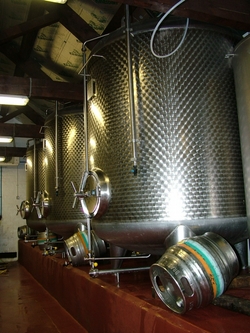Sitewide Search
Products
- Discount Offers
- Stainless steel pickling pastes
 13 items
13 items
Pickling pastes are only used after welding for th... - Stainless steel cleaning and maintenance
 8 items
8 items
Products in this section are for removal of Iron (... - Weld Cleaning and Marking machines
 16 items
16 items
Electro-chemical machines for the fast removal of ... - Stainless Steel Identification and Test kits
 8 items
8 items
ELECTRO-CHEMICAL TESTING EQUIPMENT for alloy ident... - Non Destructive Testing products (NDT)
 12 items
12 items
Quality Non-destructive testing products for liqui... - Aluminium cleaners
 3 items
3 items
We have developed a range of products designed to ... - General Metal cleaning and maintenance products
 5 items
5 items
Aluminium, Copper, Nickel, Steel & Stainless S... - Dry Ice Cleaning
 7 items
7 items
Innovative cleaning system for fast removal of sur... - Tungsten welding electrodes (TIG)
 1 items
1 items
High quality, European manufactured, tungsten elec... - Tungsten electrode grinders (TIG)
 4 items
4 items
A range of grinders for sharpening tungsten electr... - Specialised Welding and Fabrication products
 4 items
4 items
A range of products which are designed to assist f... - Metal powder spraying torch
 1 items
1 items
Torches & powders for build up and repair of metal... - Silver and Copper brazing alloys
 4 items
4 items
High quality, European manufactured, brazing alloy... - Material Safety Data Sheets
 1 items
1 items
MSDS for our products. Unfortunately we are unabl...
Articles / News
- 21 Jun 2023
Passivation of Stainless Steel - 20 Jun 2023
How to chose a weld cleaning machine - 19 Jun 2023
Pickling of Stainless Steels - RSS Feed

- More >>>
More Info
Subscribe
Stainless steel in food processingposted on 17 June 2023 | posted in Stainless steel
Stainless Steel in food processingThe main property of stainless steel utilised by food & beverage processing is the presence of the chrome oxide inert layer. Without this thin passive layer a reaction would occur between the metal and the product leading to contamination. Although this passive layer occurs naturally over time, fabricators must have confidence that it is fully formed before equipment is installed. Pickling paste does not passivate stainless steel and is only used to remove weld burn. Other chemical treatments are required to promote the passive layer. The most commonly quoted standards are ASTM A967 and ASTM A380, which give details of the chemicals that can be used and their method of application. Most companies have procedures based on the information contained within those standards. The majority of procedures include an initial cleaning and degreasing process to remove workshop oils, dirt and any iron contamination (Antox 75E) before passivating the surface. The cleaning solution is applied to the surface and allowed 20-30 minutes to react with any iron, before being neutralised and washed off. Once the surface has been rinsed passivation can take place. Nitric acid based solutions give the best results (Antox 90E) for passivation. The solutions are sprayed or painted onto the metal surface, left in contact for 20-30 minutes, then neutralised and jet washed. A uniform passive layer is formed which can be verified by a simple chemical check. In some instances the more environmentally friendly citric acid based solutions are preferred (Oakite 51) for passivation. To obtain the same level of passivation as Nitric Acid it requires application at higher temperatures. As well as spraying or painting onto the metal surface, it can also be circulated through pipe-work under pressure at approx 10% dilution in place of caustic based solutions. The resulting waste water from rinsing has a lower acid content than the Nitric based treatments which can lead to easier disposal. Considerable time can be saved by using a one step solution formulated to clean, degrease, remove iron contamination and passivate all in one (Antox 95E). This is applied as a final wash before the equipment leaves the workshop and gives a superior surface finish. During shipping and installation, care must be taken not to contaminate or damage the passive layer as this can be more difficult to remedy. Fingerprints and surface dirt can be easily removed by specially formulated silicon free cleaners (Antox 800S). The presence of silicon can cause further contamination to some food processing procedures and other cleaners contain halides which attack stainless steel. To ensure a long trouble free life a good maintenance procedure should be implemented. Stainless steel requires low maintenance compared to other materials but still requires looking after to gain maximum benefit from its unique properties. Most equipment designed in stainless steel is more expensive than using other materials but this can be justified by getting the maximum benefits from the special property of the metal. Our technical staff can advise clients on the use of our products and supply procedures for their correct application. Please feel free to contact our office for further information or to arrange a visit from our technical team, usually, the earlier in the design, the better.
|
|
 £0
£0 Free delivery to UK mainland. Other areas may have additional costs. We have local agents covering Northern Ireland & Eire. Please contact us for more details.
Free delivery to UK mainland. Other areas may have additional costs. We have local agents covering Northern Ireland & Eire. Please contact us for more details. 




